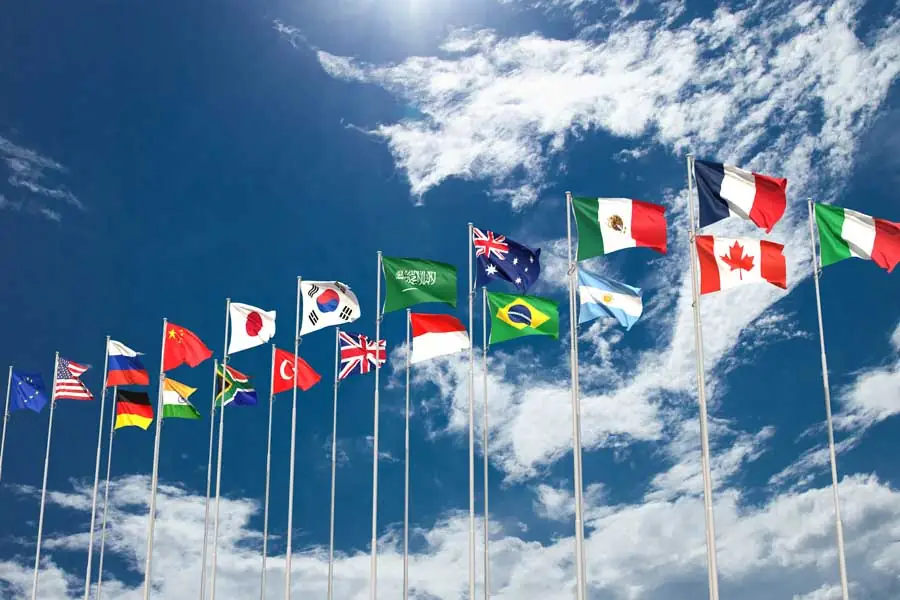How to Make Sure Your Company Website Connects with International Customers


I often see Taiwanese company websites hosted on servers in Taiwan with language switchers offering multiple languages. But, are these websites genuinely reaching customers in those other countries?
Table of Contents
Imagine a potential customer in Germany searching for your product. Will they find your company easily? The answer often lies in how your website is structured and targeted.
It’s Complicated Because Search is Local
When you search for a product in Taiwan using a keyword or a specific company type, the results are tailored to your location (Taiwan) and even more specifically to your exact location (Such as Taichung North District). This localization makes sense because Google aims to provide the most relevant and useful results for each searcher.
But what happens when an international customer searches for products and services without specifying a location? Typically, they won’t make multiple searches for each location; they’ll just search using the keywords for the products they are looking for. So if your website does not appear in the search results for their country, you will not appear to these potential customers.
So, how should you manage multiple language versions of a website? Simply using Google Translate is not a solution—it often breaks the design and that is not a good way to represent your brand to potential customers.


Resolution: Effective Global Planning
According to Google’s guidelines on managing multi-regional sites, geotargeting is the best approach to ensure your website content is discoverable by people searching in specific countries. But what is geotargeting and how should you set it up?
What is geotargeting?
Geotargeting is the practice of delivering different content or advertisements to website visitors based on their geographic location. It uses IP addresses or GPS data to determine a user’s location and tailor the website experience accordingly. For your company website this means having separate versions of your website in the local language of your target audience. It also means hosting the website in that region as well.
How GlobalSense implements geotargeting
The first thing is to have the right web address. Google recommends having separate URLs for each region you are targeting. For instance, a Taiwan-based manufacturer with both a Traditional Chinese and Japanese website should use:
- “yourcompany.com.tw” for Taiwan
- “yourcompany.jp” for Japan
- “yourcompany.de” for Germany
This approach makes it clear to users that the website is tailored for them. These domains are not expensive so it is worth investing in doing this properly.
The second thing is the server location. While server location is not crucial for ranking as far as Google is concerned, speed is still very important. Hosting your site on a server reasonably close to your target market will improve load times and that will help your website’s visibility to your customers.


So Where should the website be hosted?
You can host both Taiwanese and Japanese sites on a server in Taiwan with no significant speed issues. This is because Taiwan and Japan are next to each other and have good internet speed between the countries. That does not work for all countries though.
Example: Targeting Customers in Germany
Suppose you want to target customers in Germany, which is geographically distant from Taiwan. Here’s how you can effectively do this:
- Website Address: Use a distinct URL for the German market, such as “yourcompany.de”
- Website Hosting: Host the German website on a server in Germany or a nearby European country to ensure fast load times.
- Make sure to adjust some of the content such as the contact information to make it relevant to the target audience.
To effectively reach your international customers, it’s essential to move beyond simple language switches on a single website. Implementing geotargeting by using separate URLs for different regions and ensuring optimal server locations can significantly enhance your visibility in target markets. This approach aligns with Google’s recommendations and helps ensure that your website truly represents your brand globally.
Summary: Top 10 Key Takeaways
- Localized Search Results: Search engines prioritize local results, making it crucial for your website to be optimized for the regions you target.
- Multiple Languages: Simply offering multiple languages on one website is not enough to reach international customers effectively.
- Geotargeting: Implementing geotargeting is essential to ensure your content is discoverable by users in specific locations.
- Separate URLs: Use distinct URLs for different regional websites (e.g., yourcompany.de for Germany).
- Server Location: While server location isn’t crucial, ensuring fast load times by hosting sites close to your target markets is important.
- Custom Content: Create separate versions of your website tailored to each market’s needs.
- Design Integrity: Avoid using automated translation tools like Google Translate that can break your website’s design and harm your brand image.
- Google Recommendations: Follow Google’s guidelines for managing multi-regional sites to optimize your website’s performance and visibility.
This is really much simpler than it may appear and your web design or hosting company should be able to sit down with you to make a plan about your international websites and how to make sure that your customers can find them.
If you are not sure what to do or this seems confusing, then please contact us and we will advise you on the correct way to do this for your company website.
